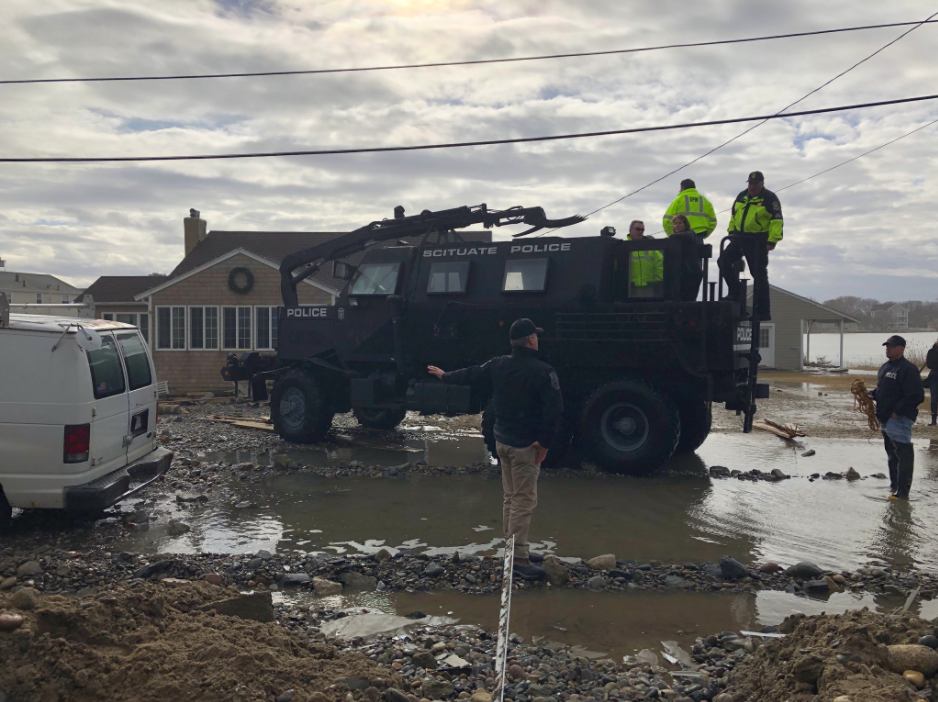Waves continue to pound the sea wall at Pleasure Bay in South Boston. This storm is keeping First Responders, Utility Companies & Public Works Crews busy @CityOfBoston today. Stay safe out there. pic.twitter.com/0oY3EngTps
— Boston Fire Dept. (@BostonFire) March 2, 2018
After Winter Storm Riley: Preparing Boston for future floods

Between March 2 and March 3, Winter Storm Riley underwent bombogenesis and transformed into a nor’easter. Riley, which initially began by showering the Midwest with snow, slammed into the East Coast and caused severe wind damage and flooding from New England to North Carolina.
The storm resulted in at least seven deaths, the loss of power to over 2.1 million homes and businesses, the cancellation of over 4,000 domestic flights and the suspension of Amtrak in the Northeast Corridor. The governors of Maryland and Virginia declared states of emergency, while Massachusetts and Pennsylvania activated the National Guard.
Within Boston, nor’easters represent a systemic flooding problem. Riley produced a 13.9 foot high-tide in Boston which inundated the waterfront, including East Boston and Dorchester, and flooded significant economic assets including multiple MBTA train stations and the future headquarters of General Electric.
Of the 20 most significant flooding events in Boston’s history, 13 have occurred during the past 18 years – with nor’easters causing 90% of the city’s largest floods overall. This problem is only expected to increase in severity as climate change results in higher ocean temperatures, rising sea levels, and more severe weather events.
Systemic flooding problems are not inevitable; a coalition including the Pew Charitable Trusts, in collaboration with 28 other “fiscal conservatives, architects, engineers, insurance businesses, and public works professionals” organizations, urged Congressional leaders to increase flood-ready requirements for federally funded projects in flood-prone areas, in order to increase infrastructure and asset resilience while decreasing repair costs. They highlight that 82% of registered voters polled supported this requirement and that flood-related disasters have cost the country over $500 billion since 2000.
The coalition stresses that action now could improve safety, reduce physical infrastructure damage, and decrease the economic cost of flood-related disasters. This recommendation is part of Pew Charitable Trusts Flood-Prepared Communities projects, which recommends other reforms in tandem with increasing flood ready requirements, including reforming the National Flood Insurance Program and increasing investment in cost-effective disaster mitigation grants.
Further Reading and Sources:
- Winter Storm Riley Underwent Bombogenesis, Battered the East With Strong Winds, Coastal Flooding and Heavy, Wet Snow – The Weather Channel
- Winter Storm Riley Kills at Least 7 in the Mid-Atlantic and Northeast; More Than 2 Million Lose Power – The Weather Channel
- A Bomb Cyclone Brings Massive Flooding to New England – Again – Wired
- Storm kills Plympton man, leaves thousands without power – Boston Globe
- Winds, flooding wreak havoc on Mass. as nor’easter batters state – Boston Globe
- Pew, Fiscally Conservative Groups Urge Stronger Flood Standards for Building – Pew Charitable Trusts
- Pew Among 30 Organizations Urging Congress to Enact Stronger Flood Standards – Pew Charitable Trusts
- Where It Rains, It Floods – Pew Charitable Trusts
